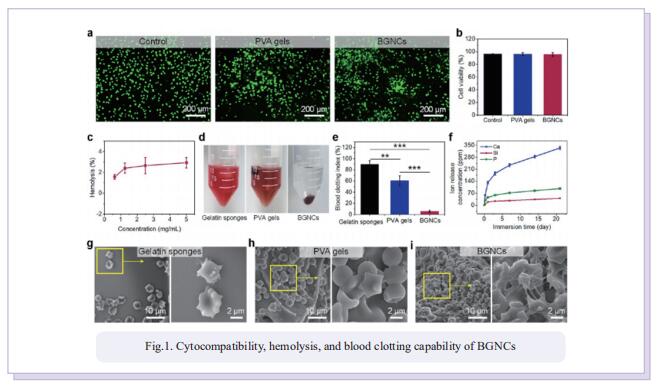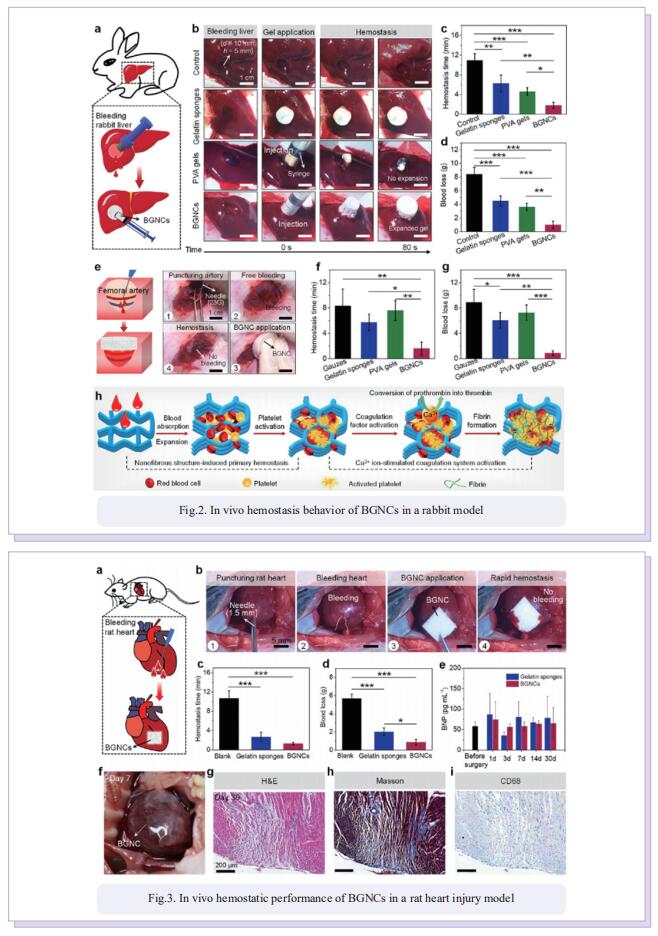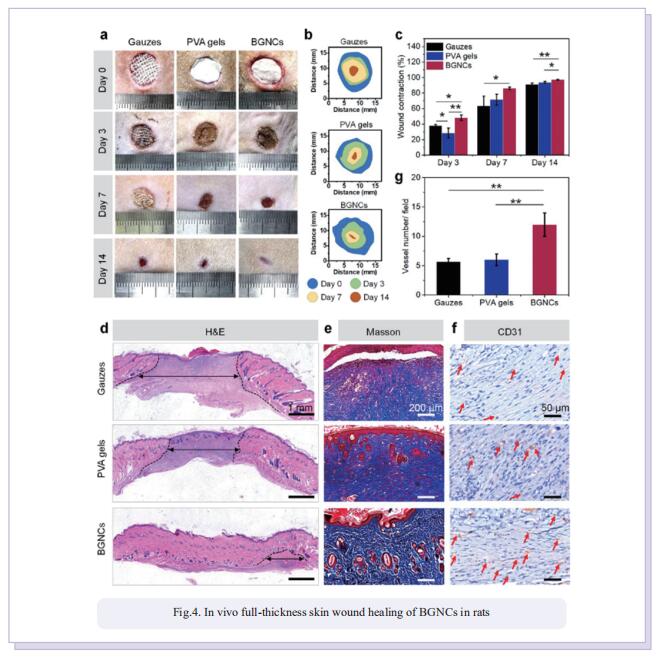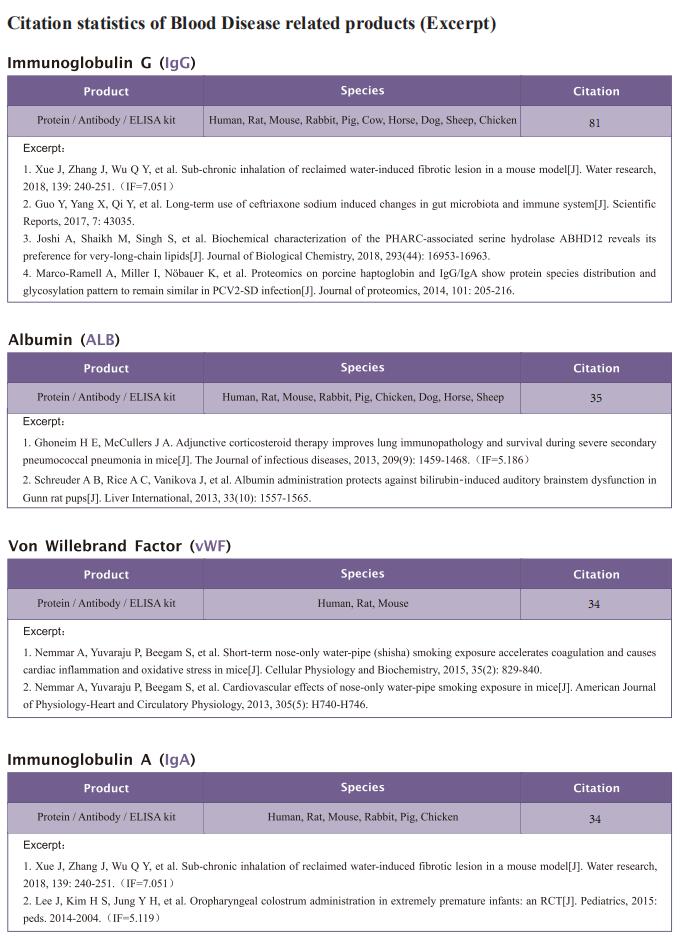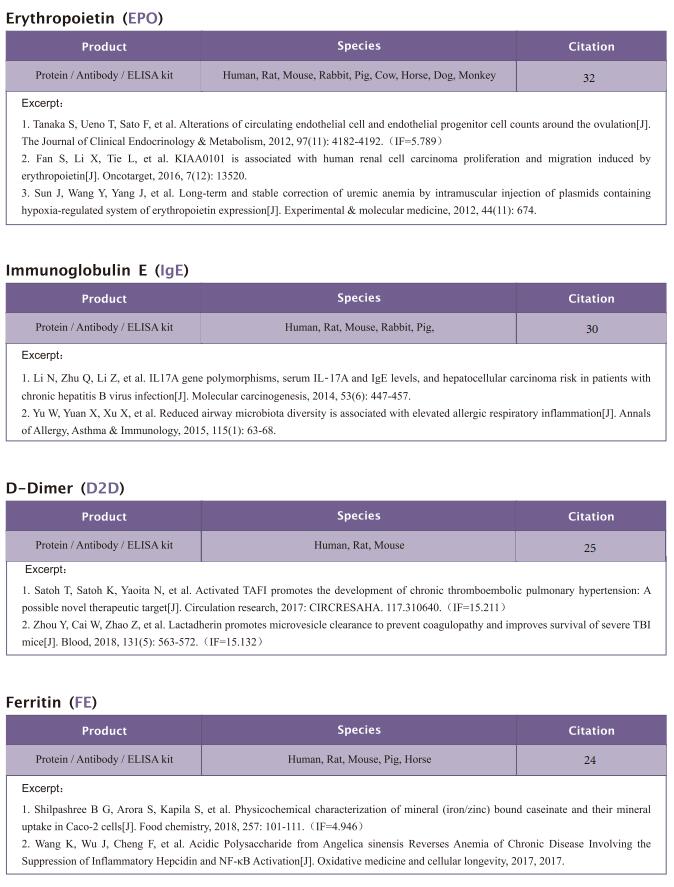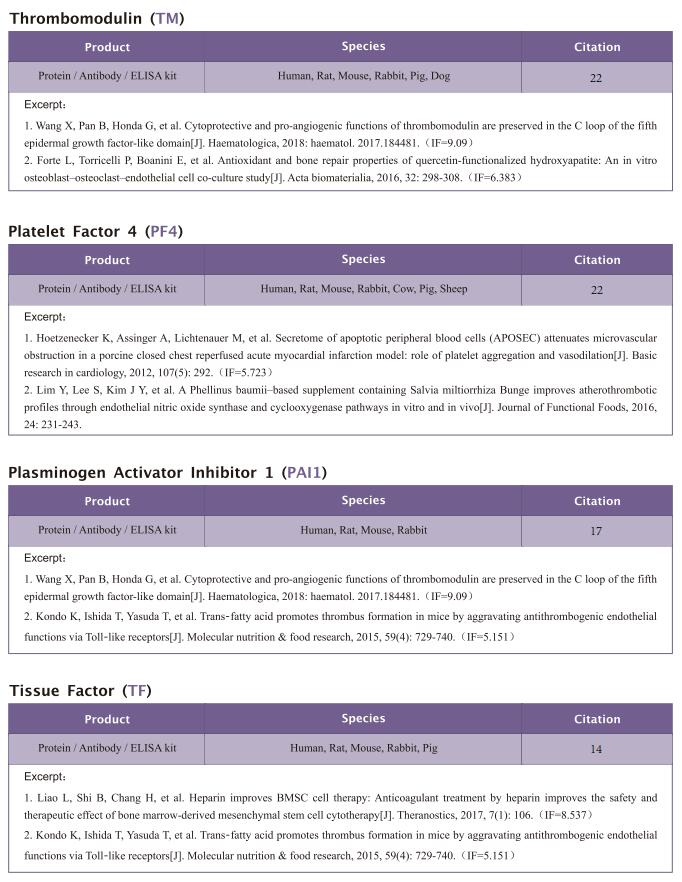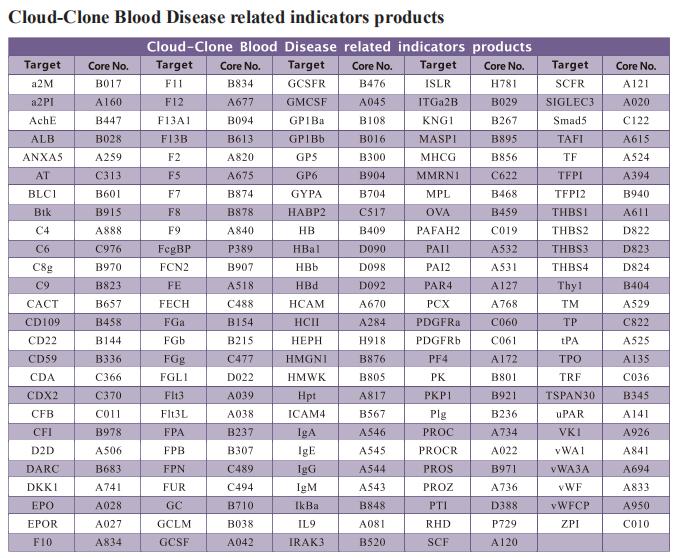Flexible Bioactive Glass Nanofiber-Based SelfExpanding Cryogels with Superelasticity and Bioadhesion Enabling Hemostasis and Wound Healing
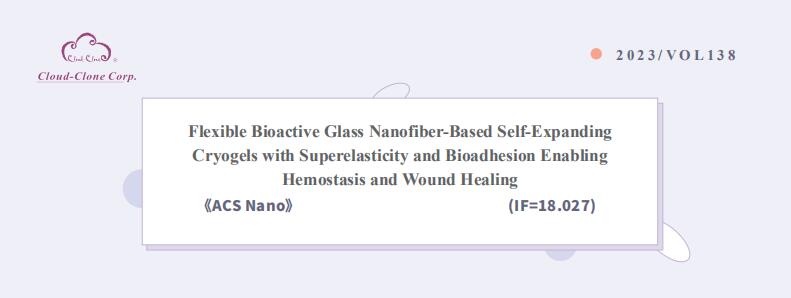
On June 6, 2023, Bin Ding, Innovation Center for Textile Science and Technology, College of Textiles, Donghua University, China, and his team published a paper titled “Flexible Bioactive Glass Nanofiber-Based SelfExpanding Cryogels with Superelasticity and Bioadhesion Enabling Hemostasis and Wound Healing” in ACS Nano. They developed a self-expanding nanofibrous cryogel composed of highly flexible BG nanofibers and citric acidcross-linked poly(vinyl alcohol) (PVA) with superelasticity, bioadhesion, and bioactivity.

The kits [ELISA Kit for Brain Natriuretic Peptide (BNP), CEA541Ra] of Cloud-Clone brand were chosed in this article, we are so proud for supporting the reaserchers.

Self-expanding cryogels hold unique prospects for treating uncontrollable hemorrhages. However, development of a mechanically robust, tissue-adhesive, and bioactive self-expanding cryogel enabling effective hemostasis and tissue repair has remained a great challenge. Herein, we report a superelastic cellular-structured bioactive glass nanofibrous cryogel (BGNC) composed of highly flexible BG nanofibers and citric acid-cross-linked poly(vinyl alcohol). These BGNCs exhibit high absorption capacity (3169%), fast self-expanding ability, near zero Poisson’s ratio, injectability, high compressive recovery at a strain of 80%, robust fatigue resistance (almost no plastic deformation after 800 cycles at a strain of 60%), and good adhesion with diverse tissues. The BGNCs provide sustained release of Ca, Si, and P ions. Moreover, the BGNCs present better blood clotting and blood cell adhesion ability and superior hemostatic capacity in rabbit liver and femoral artery hemorrhage models as compared with commercial gelatin hemostatic sponges. In addition, BGNCs are able to stop bleeding in rat cardiac puncture injury in about 1 min. Furthermore, the BGNCs are capable of promoting rat full-thickness skin wound healing. The development of self-expanding BGNCs with superelasticity and bioadhesion provides a promising strategy for exploring multifunctional hemostatic and wound repair materials.
